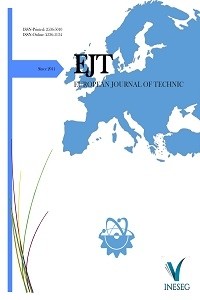Teaching Algorithms Design Approaches via Interactive Jupyter Notebooks
Teaching Algorithms Design Approaches via Interactive Jupyter Notebooks
Algorithms, Design, Approach, Technique, Jupyter Notebook, Interactive, Teaching Learning,
___
- [1] Neapolitan, R., & Naimipour, K. (2010). Foundations of algorithms. Jones & Bartlett Publishers.
- [2] Cormen, T. H., Leiserson, C. E., Rivest, R. L., & Stein, C. (2022). Introduction to algorithms. MIT press.
- [3] Yadav, A., Gretter, S., Hambrusch, S., & Sands, P. (2016). Expanding computer science education in schools: understanding teacher experiences and challenges. Computer science education, 26(4), 235-254.
- [4] Project Jupyter, https://jupyter.org/ (accessed Jun. 17, 2023).
- [5] Forišek, M., Steinová, M. (2013). Explaining Algorithms Using Metaphors. Springer Briefs in Computer Science. Springer, London. https://doi.org/10.1007/978-1-4471-5019-0_1.
- [6] Forišek, M., & Steinová, M. (2012, February). Metaphors and analogies for teaching algorithms. In Proceedings of the 43rd ACM technical symposium on Computer Science Education (pp. 15-20).
- [7] Castelo-Branco, R., Caetano, I., Pereira, I., & Leitão, A. (2020, November). The collaborative algorithmic design notebook. In Int. Conf. of the Architectural Science Association (pp. 1056-1065).
- [8] Ketcheson, D. I. (2014). Teaching numerical methods with IPython notebooks and inquiry-based learning. Proceedings of the 13th Python in Science Conference. Retrieved from http://hdl.handle.net/10754/346689.
- [9] Reades, J. (2020). Teaching on jupyter. Region, The Journal of Ersa, 7(1), 21-34.
- [10] Johnson, J. W. (2020, October). Benefits and pitfalls of jupyter notebooks in the classroom. In Proceedings of the 21st Annual Conference on Information Technology Education (pp. 32-37).
- [11] Cardoso, A., Leitão, J., & Teixeira, C. (2019). Using the Jupyter notebook as a tool to support the teaching and learning processes in engineering courses. In The Challenges of the Digital Transformation in Education: Proceedings of the 21st International Conference on Interactive Collaborative Learning (ICL2018)-Volume 2 (pp. 227-236). Springer International Publishing.
- [12] V. Liubchenko and H. Parkhomenko, "The Involvement of Jupyter Notebooks as an Educational Tools: A Case Study," 2021 IEEE 16th International Conference on Computer Sciences and Information Technologies (CSIT), LVIV, Ukraine, 2021, pp. 147-150, doi: 10.1109/CSIT52700.2021.9648674.
- [13] Glick, B., & Mache, J. (2018). Using Jupyter notebooks to learn high-performance computing. Journal of Computing Sciences in Colleges, 34(1), 180-188.
- [14] Hamouda, S., Edwards, S. H., Elmongui, H. G., Ernst, J. V., & Shaffer, C. A. (2018). RecurTutor: An interactive tutorial for learning recursion. ACM Transactions on Computing Education (TOCE), 19(1), 1-25.
- [15] Birster, C. A. (2017). Engagement in Foundational Computer Science Courses Through Supplementary Content for Algorithms. arXiv preprint arXiv:1801.06047.
- [16] Applications of Algorithm Design Approaches to Computer Science Problems Presented via Interactive Jupyter Notebook Pages, https://sites.google.com/view/algorithm-design-approaches/ (accessed June 17, 2023)
- ISSN: 2536-5010
- Yayın Aralığı: Yılda 2 Sayı
- Başlangıç: 2011
- Yayıncı: Hibetullah KILIÇ
Teaching Algorithms Design Approaches via Interactive Jupyter Notebooks
Q-Learning Based Obstacle Avoidance Data Harvesting Model Using UAV and UGV
Günay ÖNAL, Abdulkadir LEVENT, Zühre ŞENTÜRK
İsmail Ümit ÇIKMAN, Mehmet Emin ÖNCÜ, Şermin KOÇYİĞİT
Efficiency Analysis in Solar Air Heaters with Attached Internal Fins
Fevzi GÜLÇİMEN, Hakan KARAKAYA, Aydın DURMUŞ
Investigation of Static and Dynamic Analysis of Asynchronous Motors in the Cement Industry
Hayrullah Çağtay ALKAYA, Sertaç GÖRGÜLÜ
Determination of Antioxidant Activity of Dietary Selenium, Oleuropein, Glutathione Mixture
Increasing The Tensile Strength of Adhesive T-Type Joints with Bio-Inspired 3D Printed Inserts
